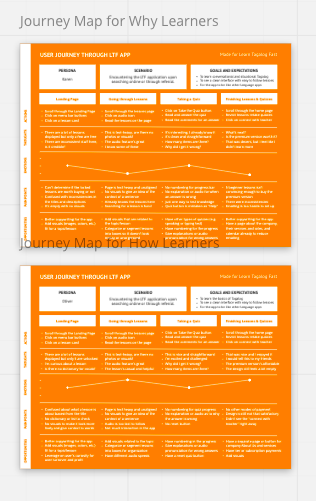5. Affinity Mapping, Persona Creation & User Journey Mapping
In the same Miro board, my fellow intern and I conducted affinity mapping with the notes and grouped them based on the flow of the discussion guide.

Based on the data, we surmised 2 different types of Personas for the LTF app and were based on How Learners and Why Learners. With How learners being beginners to the language, who frequently ask questions like "How do I say this? How do I spell this?". Meanwhile, Why learners are those who identify themselves as intermediate learners who are delving more into the theory of how words and sentences are constructed.
The personas were also created through the use of Miro:

User Journey Maps were also created based on the findings from the UTs as well as the personas and were also created in Miro:










